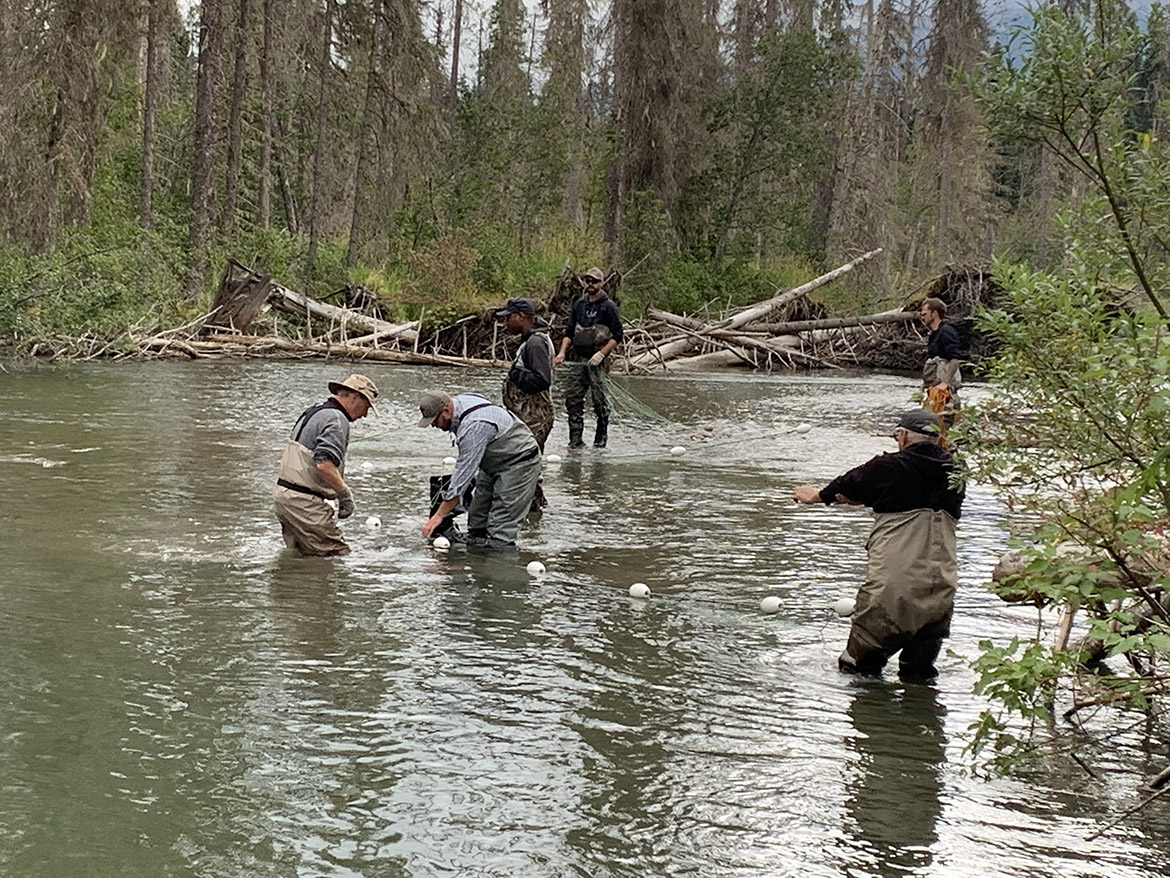Big Bar landslide response information bulletin
September 7 2021
On this page
- Low water levels and “nature-like” fishway continue to support fish migration at Big Bar
- 2021 – It’s a “pink” year
- Enhancement program
- Onsite operations
- Current images of work being done at the landslide site
Low water levels and “nature-like” fishway continue to support fish migration at Big Bar
On September 1, more than 108,000 salmon were detected at the Churn Creek sonar station, located 40 km upstream of the Big Bar landslide site, marking the largest single-day arrival to date. Low water levels and improvements to the “nature-like” fishway are allowing larger numbers of fish to migrate past the slide site.
As of September 5, more than 1.45 million salmon have been detected upstream of the Big Bar landslide. Pink salmon are expected to arrive at the slide site in the coming week.
2021 – It’s a “pink” year
The odd-year Fraser River pink salmon run is the largest of the pink salmon runs in British Columbia, and these fish are currently being observed in small numbers downstream of the Big Bar site in Lillooet. Even-year returns of the Fraser pink salmon occur in other watersheds.
Pink salmon last passed through the slide site in 2019, during the emergency response phase of the project. Unlike Chinook, coho and sockeye, pink salmon follow a two-year life cycle. The adults spawn in the fall, with fry emerging the following spring. Those fry immediately migrate to the ocean. The adults return in the following year to spawn again.
The yearly salmon migration through Big Bar typically begins with the early-timed Chinook run from mid-June to early September, followed by sockeye from July to late September. The pink salmon return typically starts in late August and lasts through September in odd years only (2021, 2023, 2025, etc.), followed by annual runs of Interior Fraser coho from mid-September to early November.
As of September 1, 22 radio tags have been applied to pink salmon captured by the Lillooet fish wheel. These tags will be monitored to determine when the fish continue towards the slide site and whether they are entering other tributaries. Approximately 20% of the Fraser pink salmon return migrates past Big Bar to spawn upstream.
Enhancement program
A wide variety of technicians have been working diligently over the last several weeks on the Chinook broodstock program. This team includes specialists from Upper Fraser Fisheries Conservation Alliance, Stswecem'c Xgat'tem, Carrier Sekani Tribal Council, Lheidli Tenneh First Nation, Okanagan Nation Alliance, Nak’azdli First Nation, Simpcw First Nation, Spruce City Wildlife Association and DFO. To date, the crews have collected milt from 153 males and eggs from 69 females from 11 of the 13 targeted streams above the slide site. The broodstock collection program is expected to be completed by mid-September.
Meanwhile, spawning of the 700 Early Stuart sockeye adults is nearly complete at DFO’s Cultus Lake Laboratory.
Onsite operations
Cooler temperatures have reduced the risk from surrounding wildfires, allowing the demobilization of the camp and the work site to gain pace. However, crews are keeping a close eye on the situation in case the wildfire risk increases again.
Materials and equipment are being transported from the slide site to the camp area and then to Lillooet by truck. The West Pavilion Road was closed briefly due to a washout from a mudslide on August 22.
Current images of work being done at the landslide site





Additional images of the work underway as part of our response efforts can be seen on the Government of BC’s Flickr channel.
- Date modified: